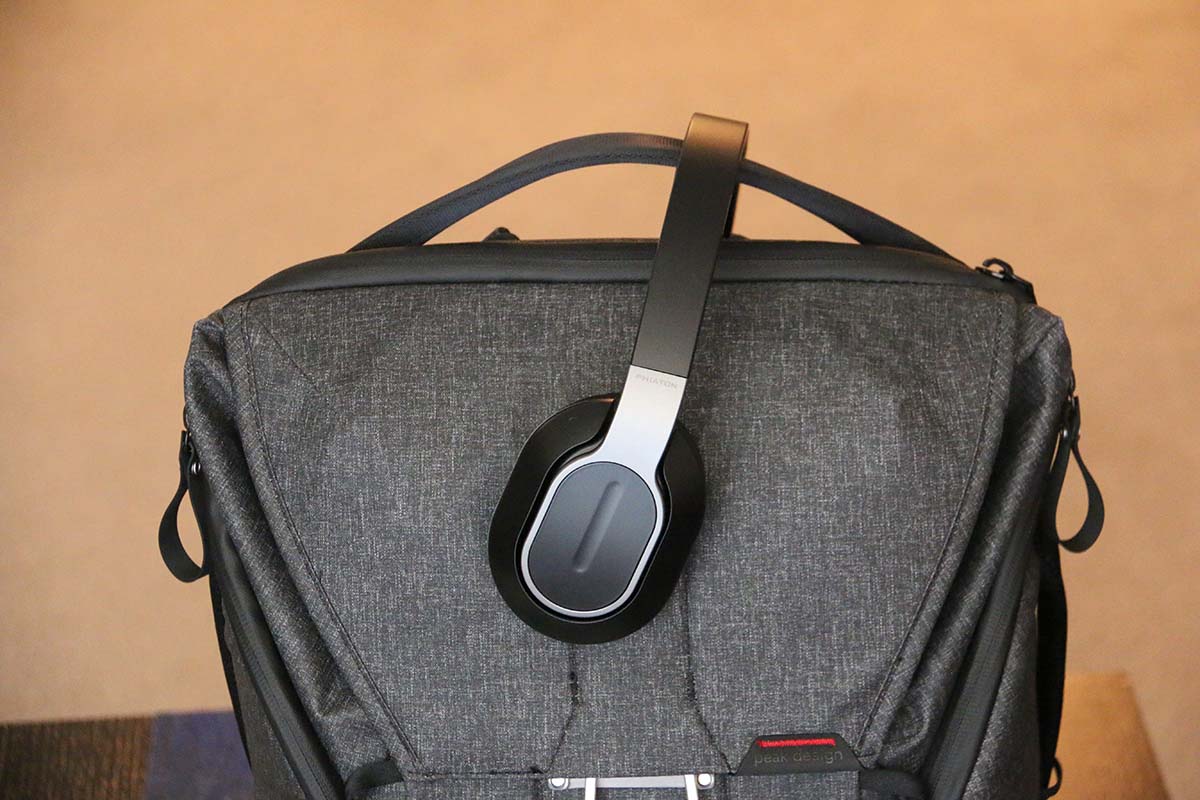
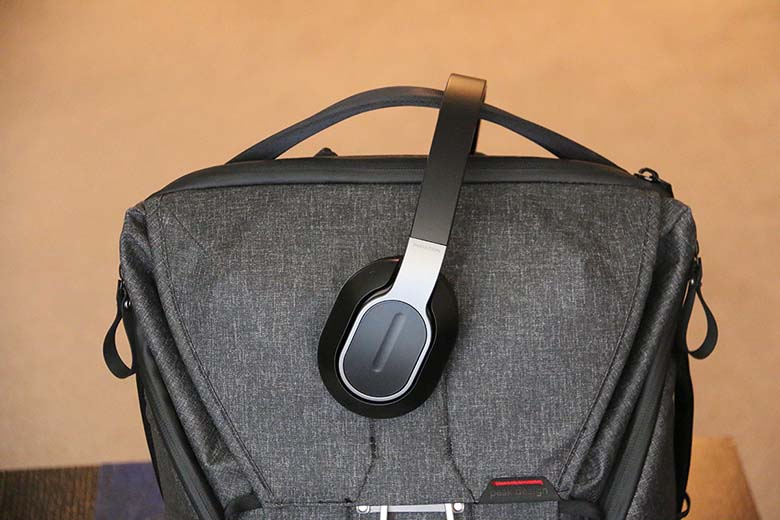
The Master Switch


The Master Switch
When you test as much audio equipment as we do, it’s actually quite amazing how impatient you can get. Time and again, we find ourselves getting frustrated at aspects of speakers, amps and headphones that most people probably wouldn’t even notice – to the point that we’ve had to start dialling it back a little, reminding ourselves that not everybody who uses a particular pair of headphones, for example, will even register that a feature is out of whack. This isn’t arrogance, or a case of us being holier-than-thou: it’s a much-needed check on our behaviour. Then again, there are products - like the Phiaton BT 460 wireless headphones - that we still get annoyed with. In this case, legitimately.
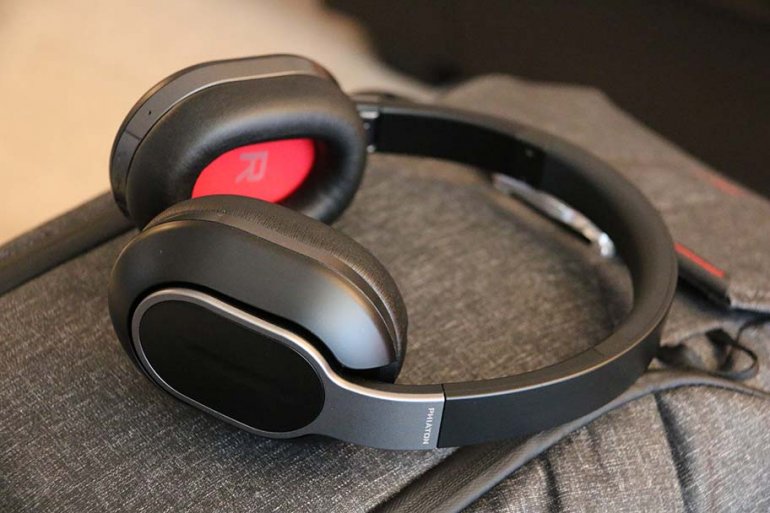
The BT 460s are a relatively affordable pair, and as such, they are constructed of plastic. That’s definitely not a problem – we are all in favour of wireless headphones being affordable, and we’ve got no issue with plastic construction. But when you lift these out of the carry case, the first thing you notice is that the cups are designed to wobble on their hinges, presumably to get a more snug fit against the head. The result? Clack. Clackety-clack. Clackclackclackclack. Plastic on plastic. It’s not a very good first impression.
To be fair, this is actually a lot less bothersome than we thought it would be. Once we got over the initial surprise, we found it didn’t trouble us that much. And these are pretty well-built; plastic they may be, but they feel robust, and the headband has a pleasing level of flex to it. You could quite happily throw these into a backpack without worrying too much about scratching or damaging them.
They are relatively simple to use, too, with caps that fold up into the headband for portable storage. There are some clever features here, almost all of which a moderately-educated chimp could use. A Bluetooth pairing switch in a sensible location. A USB charging socket and a 3.5mm jack hidden behind a panel. A nice, squashy headband. Clear left and right indicators on the inside of the cups. The cans may make a noisy first impression, but at least they get the basics right. Battery life is good, too: we got 17 hours out of these with music at about 70% of top volume, and recharging took no more than a couple of hours. We also never had an issue pairing with various devices, nor did we encounter any Bluetooth dropouts.
But here’s the problem with the BT-460. It’s an ambitious pair of headphones…and it just doesn’t have the technology or the styling to match that ambition. So much so that there are elements of these headphones that are over-engineered to the point of absurdity.
Perfect example: Everplay X. What is Everplay X, you ask? Is it some sort of new sound algorithm? A binaural processor, perhaps? Nope. It’s the ability to connect the headphones to your smartphone or audio player with a cable, when the wireless battery runs out.
That is it. That is the feature, in its entirety. If there was ever an element of wireless headphones that didn’t need a focus group to come up with a cool name, it’s this one. The moment we opened the package and spied the included 3.5mm cable, we knew what the score was. We didn’t need to be told that this thing had a name like a virus in a Resident Evil movie. (Also, explain this to us: you give an accepted, even mundane headphone feature a name like Everplay X, but you call the headphones BT 460? Whah?)
There is a sense that even Phiaton themselves aren’t quite sure about this. While it’s prominently displayed in the manual and on the product’s Amazon listing, you won’t find any mention of it on the website product page. Frankly, it would have been better if they ditched it entirely. Then locked the focus group in a shipping container. Then dropped it in the ocean. Then nuked the site from orbit.
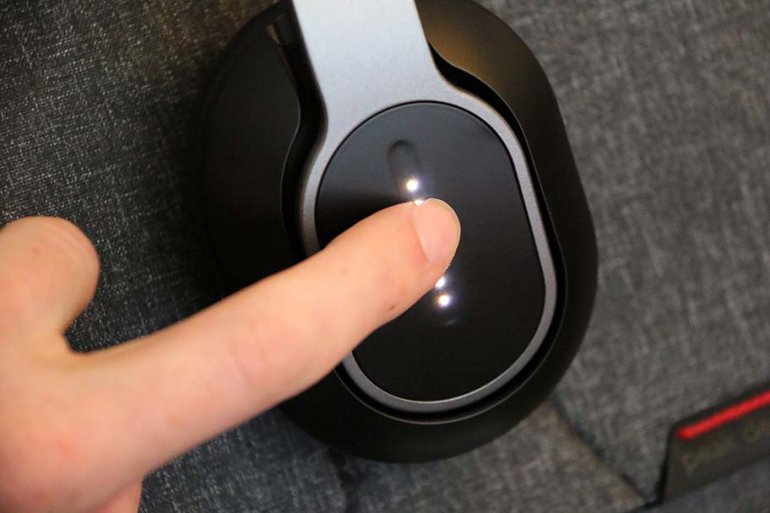
A similar problem crops up for the touch controls. In theory, this is a good idea, one plenty of other headphones have executed very well indeed. By running your finger on and around the outside of the right, you’re able to raise and lower volume, skip tracks, play and pause, and answer calls. But the technology in these headphones just isn’t good enough to get the job done. Raising and lowering volume worked fine, but there were periods when the other controls just stopped working entirely. We’d try fast forward a track, there’d be a little bleep in our ears…and nothing would happen. Play and pause would stop working at random.
In the end, we just gave up on the touch controls, not sure if it was bad design, or our flappy fingers. Ditto for the feature that pauses the music when you hang the headphones around your neck. In general, we like this kind of thing – we’ve encountered it before in the brilliant Parrot Zik3 headphones (full review here) – but it just doesn’t work here. There are always a couple of seconds before the feature kicks in, when it deigned to work at all, meaning that we always lost a little bit of our music.
And we just couldn’t believe how many pointless features these headphones had. Perfect example: when you turn the volume up and down using the touch controls, a set of LED lights appears on the outside, indicating volume level. Why? By definition, you’ll be listening to music when you control the volume, so it means you can’t see them. What are they there for? The benefit of others? Who gives a monkeys? What person would ever be genuinely interested in the visual feedback from someone else’s headphone volume? We’ll tell you: someone we never want to have a conversation with.
And then there’s the Bluetooth button. When you’re trying to turn it off, it will occasionally redial the last number you called from your smartphone, causing much panicked rummaging in pockets and backpacks to try and stop it before you have an embarrassing moment with a work colleague or a client. Don’t these people know that talking on the phone is the great terror of the 21st century?
Oh, and the headphones vibrate when you turn them on and off. For some reason. Maybe the focus group thought it was a good idea.
We don’t mind the fact that these are made of plastic. We have no problem with their budget construction, which is sturdy enough not to matter. We like their styling, and their battery life. But what we can’t forgive is the sheer amount of over-engineering and overthinking that has gone into these. There’s no reason for certain features to be here, and no reason for the existing technology not to work properly. If these headphones were a long-jumper, they’d have a terrific run-up, jump with their foot right on the edge of the line, and then face-plant into the dirt.
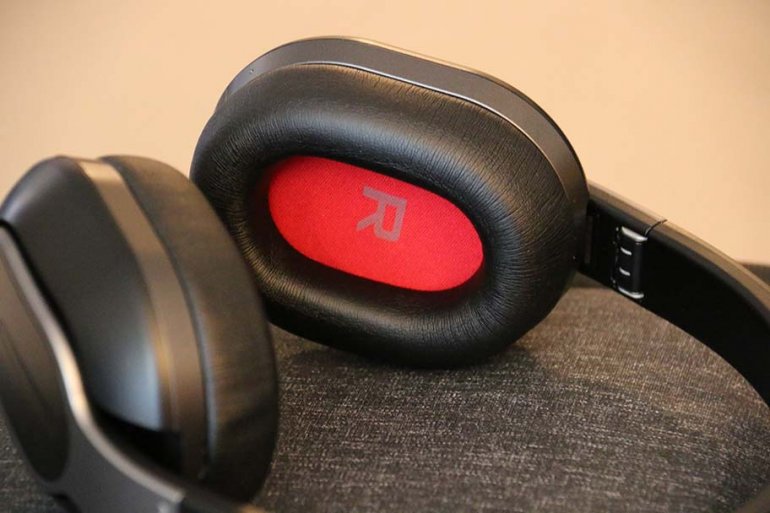
Fortunately, the headphones are relatively comfortable to wear. The don’t really bump the needle in this particular area, but we had no problem using them for long periods of time. The cups are perhaps a little smaller than we would have liked, but the foam is squashy and malleable, and we don’t think it will be an issue, even for those with larger ears.
The headband is surprisingly comfortable, causing no issues. And although the clamping pressure could arguably be a little tighter, we never felt these were in danger of slipping off. You can file the comfort and fit of the BT 460s under “Things they get right.” Which is just as well, because we don’t think these headphones would survive if they didn’t fit properly. We probably would have just hurled them across the room.
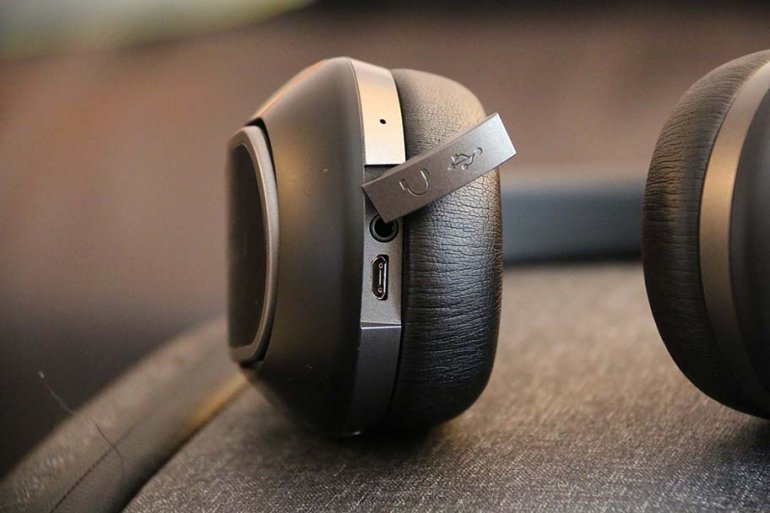
Had the sound of the BT 460s been as clumsy as the design, we probably would have aimed that throw at an open window. Fortunately, the audio quality is decent.
While it definitely isn’t going to challenge the audiophile big dogs, or the more precise wireless headphones like the Master & Dynamic MW50s (still far and away the best wireless headphones available, in our opinion), the audio quality of the Phiaton model is solid, both in and of itself and compared to other models in its price range. We particularly enjoyed the bass. Phiaton say that they’ve worked hard on the drivers to optimise the low end, and it really shows. It felt powerful and dense, without being overpowering. Again, it’s not going to match more pinpoint drivers, but it was definitely a major plus point in the listening experience. Basslines felt chunky and tough, and kick drums had a suitable weight behind them.
Other elements of the sound performed well, too. The soundstage – so often a problem with budget headphones – was perfectly adequate here, with some good spacing between the instruments, and good depth. While the mids and highs were nowhere near as excellent as the bass, they certainly did a good job, and were a pleasure to listen to. In many ways, hearing such good sound was a relief after experiencing the fumbled design elements. It’s nice to know that someone at Phiaton knows what they’re doing.
A lot of this good sound is, as touched on previously, down to the technology in these headphones. It’s not just the fact that they’ve obviously been tuned to reduce unwanted resonances, but that the 40mm drivers are made of quality stuff. In particular, Phiaton highlight the oversized neodymium magnets – neodymium is a common enough material for headphone drivers, but here, it really helps deliver on the low end. Bassheads will absolutely adore these headphones.
The BT 460s also have an interesting feature – one we didn’t get to test. If both you and a friend have a pair each, you can connect them via Bluetooth so that you’re both hearing the same thing at the same time. While this isn’t going to be a useful feature for many people, and judging by the manual, is a little bit complicated to actually pull off, it’s an innovative piece of engineering, and we definitely consider it a plus. Unsurprisingly, it has a cute name: ShareMe. At least, in this case, it feels justified.
Call quality - when the imprecise touch controls actually managed to answer a call - was absolutely fine, with no issues.
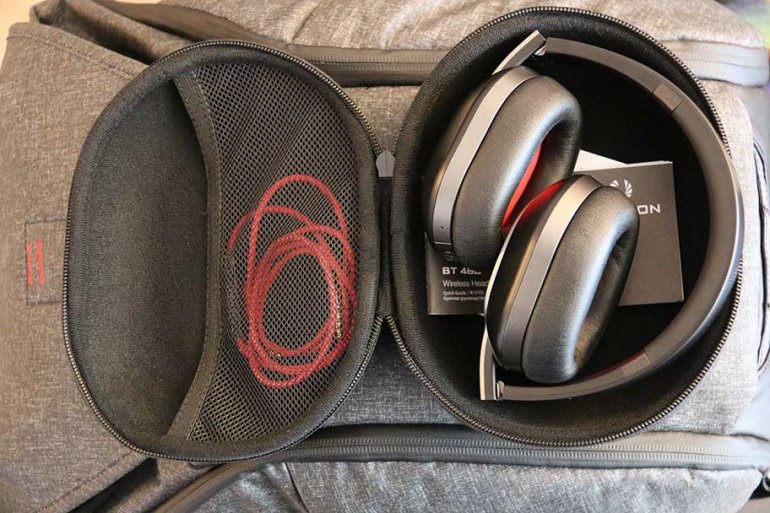
The accessory game for these headphones is pretty good – far better than we expected.
You get a really nice rigid, zippered, clamshell case, with subtle branding and good functionality that works really well. Opening it up, there’s room to not only insert the headphones in their folded form, but also a capacious pouch on the opposite side of the clamshell – with a handy Velcro strip to keep the contents inside.
As for those contents, you get a bog-standard USB charging cable, as well as a 3.5mm ca - sorry, we mean, the Everplay X Infinite Extreme Connection SP-6000 audio device. In fairness, we were rather taken with this cable: we liked its color, we liked its connectors, which look and feel premium, and we really like the in-line controls. These eschew volume buttons in favour of a simple slider, which works really well, and the single play/pause/answer call button handles all functions with aplomb.
We did, however, encounter yet another design issue when we used it. To plug it in, you have to lift up and detach the little flap on the other side of the right headphone cup. But there’s nowhere to put it! It just hangs there, flapping loose, looking faintly ridiculous. Even if someone had been admiring the sweet lights whenever you change the volume, they probably wouldn’t be wild about this dangling bit of plastic. Not good.
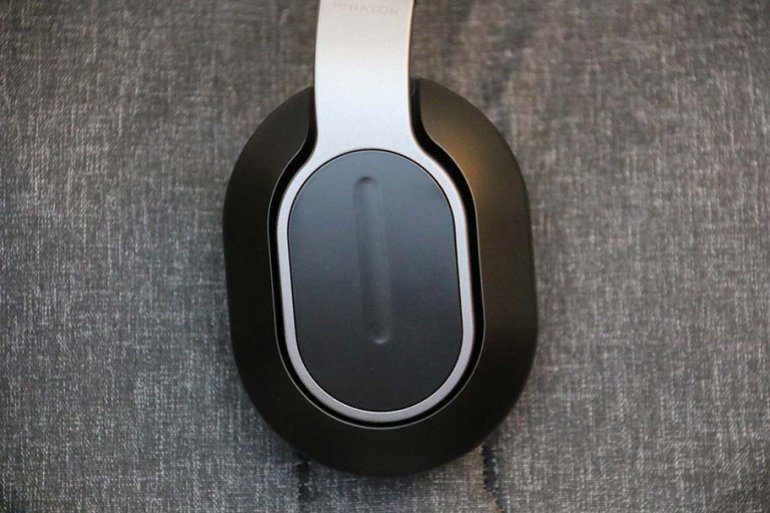
Delivering a verdict on these headphones means asking whether the positives outweigh the negatives. In this case, they don’t.
We’ve already mentioned that we’ll forgive plastic construction and clacky noises, as long as the headphones feel robust and sturdy, and are comfortable to wear. We also like good sound that knows what it wants to do, and carries it out effectively. Decent accessories are always a plus. But ultimately, the BT 460s just have way too many issues for us to recommend. They are endlessly frustrating to use, with technology that either doesn’t work right, or doesn’t work as it should. They consistently throw up unwelcome surprises – the dangling plastic flap, the insistence on re-dialling your last number – and Phiaton have put a lot of engineering effort into features that simply don’t need to be there. Do us a favor: call us when vibrating headphones become a thing.
We wanted to like these headphones. We really did. But we can’t, in good conscience, recommend you buy them. They simply aren’t up to scratch. And when there are so many alternatives out there, ones which do a far better job, there’s just no reason to buy these. They are the very definition of an also-ran.
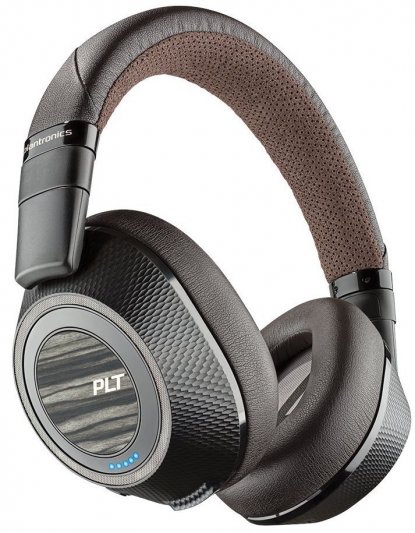 While there’s no aptX Bluetooth, you get a huge wealth of features with these, for roughly the same price as the BT 460s. There’s active noise-cancelation, the ability to switch between multiple devices seamlessly, and great battery life.
While there’s no aptX Bluetooth, you get a huge wealth of features with these, for roughly the same price as the BT 460s. There’s active noise-cancelation, the ability to switch between multiple devices seamlessly, and great battery life.
They sound good, too, with tight bass and detailed highs. Plantronics aren’t the most well-known company, but perhaps they should be. Go for these if you’re dithering whether or not to buy the BT 460.
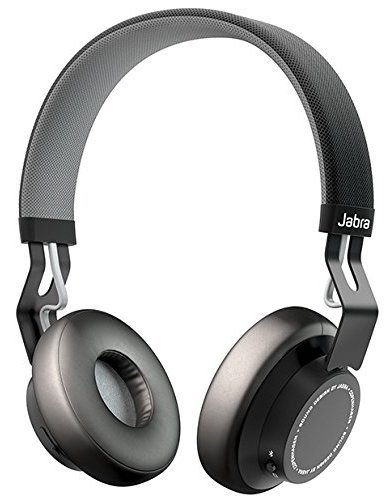 Want to spend a little less? Try these on-ear headphones. They may not be foldable like the BT 460s, and may not offer as long a battery life, but they’ve got plenty of other selling points.
Want to spend a little less? Try these on-ear headphones. They may not be foldable like the BT 460s, and may not offer as long a battery life, but they’ve got plenty of other selling points.
Chief among these: the sound quality, which is a lot better than it has any right to be for this price. And we really like their look.
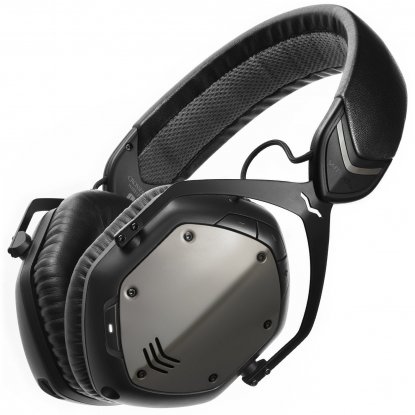 Let’s try something with a little more oomph, shall we? While the design may not be for everyone, the sound quality definitely will be. V-Moda’s dual-diaphragm drivers will rock your skull.
Let’s try something with a little more oomph, shall we? While the design may not be for everyone, the sound quality definitely will be. V-Moda’s dual-diaphragm drivers will rock your skull.
They are built like a tank, making them a perfect proposition if you happen to be the kind of person who drops headphones a lot. You’ll pay more, but they’re worth the extra cash.
| Headphones | Price | Driver | Type | CPT* | Controls | ANC** | aptX |
|---|---|---|---|---|---|---|---|
| Phiaton BT 460 | $175 | 40mm | Over-Ear, Closed | 17 Hours | Yes | No | Yes |
| Plantronics Backbeat PRO2 | $199 | 40mm | Over-Ear, Closed | 24 Hours | Yes | Yes | No |
| Jabra Move Wireless | $100 | 40mm | On-Ear, Closed | 8 Hours | No | No | No |
| V-Moda Crossfade Wireless | $300 | 50mm | Over-Ear, Closed | 12 Hours | Yes | No | No |
*CPT = Continuous Playback Time
**ANC = Active Noise Cancellation